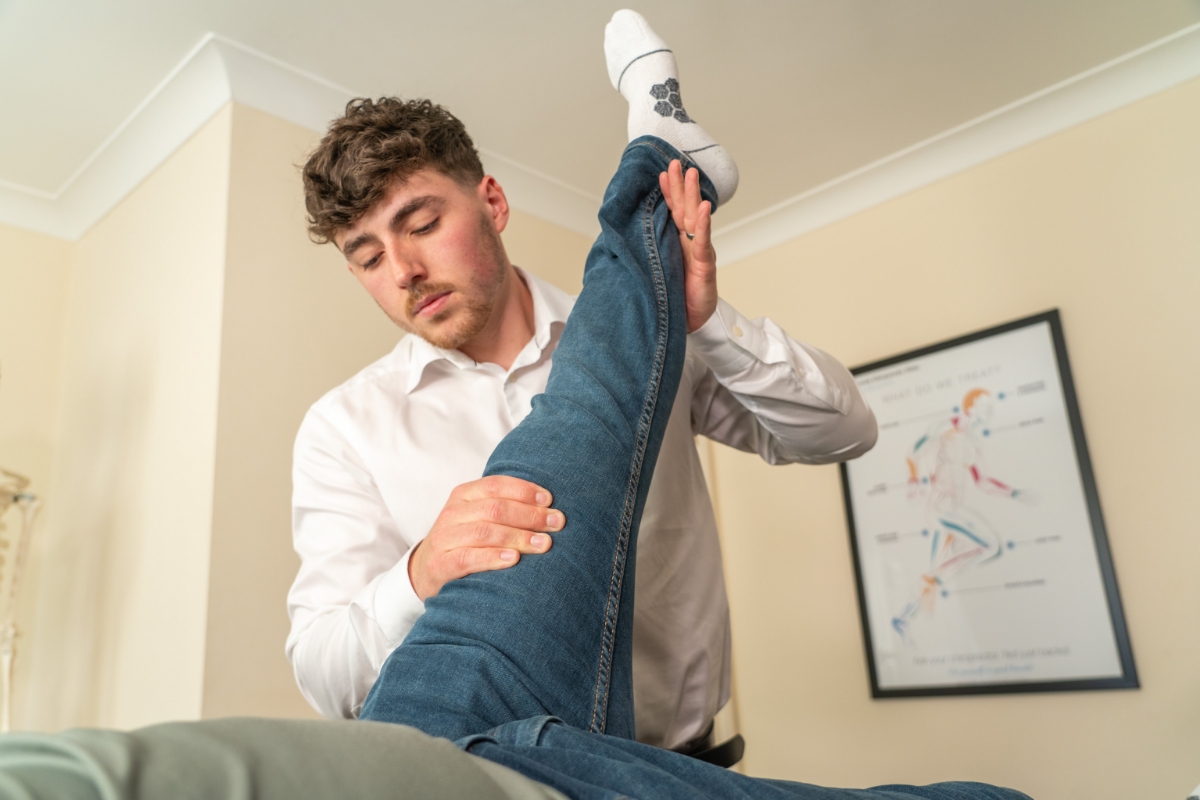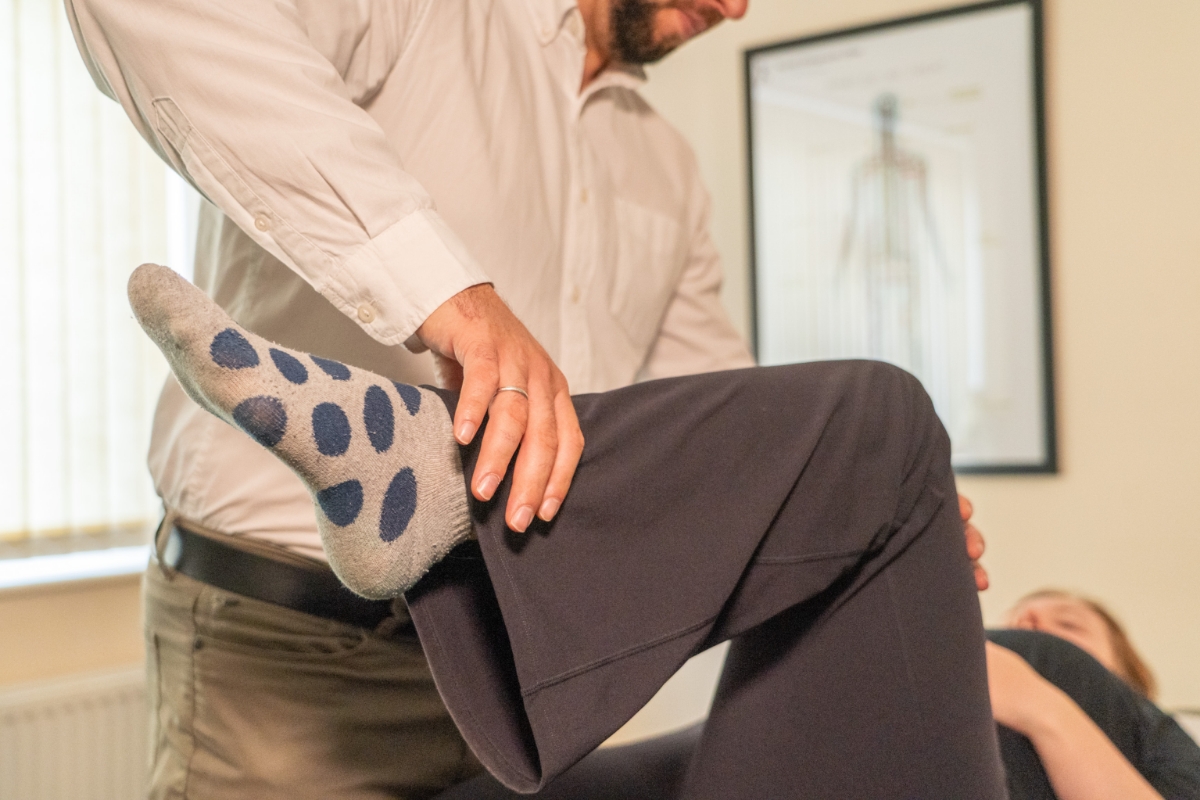A patient’s guide from Acomb Chiropractic Clinic
Hip pain can sneak up on you, limiting your stride, your exercises, and even simple tasks like tying your shoe laces. At Acomb Chiropractic Clinic, we know that the hip is more than just a ball-and-socket—it’s a central hub connecting your spine, pelvis, and legs. When it’s out of balance, the effects ripple through your entire body. This guide will help you recognise what is behind your hip discomfort, learn how chiropractic care could address the root cause, and discover self-care strategies to keep you moving freely.

Common causes of hip joint pain
Your hip relies on bones, ligaments, muscles, and cartilage working in harmony. Pain could arise from:
- Osteoarthritis – Gradual wear-and-tear erodes cartilage, causing stiffness and aching.
- Labral tears – Damage to the ring of cartilage (labrum) around the hip socket leads to sharp catches or grinding.
- Muscle imbalances –Tight hip flexors or weak glutes pull the joint out of alignment.
- Bursitis – Inflammation of the bursa (fluid-filled sac) creates a burning sensation on the outer hip.
- Referred pain – Lower back or sacroiliac joint dysfunction can also mimic primary hip pain.
Pinpointing the exact culprit is vital. Our clinic uses a detailed assessment—postural analysis, range-of-motion testing, and hands-on palpation—to uncover both the local issues and the contributing body mechanics. Not all hip conditions are suitable for chiropractic care, so a complete examination is important to assess if we can help.

Recognizing the signs and symptoms
Hip joint pain doesn’t always feel the same. Watch for:
- Deep, aching pain – Often felt in the groin, front thigh, or buttock, worsening with activity.
- Stiffness – Difficulty putting on shoes, climbing stairs, or rising from a chair.
- Clicking or locking – Snapping sensations during movement, may hint at cartilage damage.
- Radiating discomfort – Pain traveling down the leg (often the frontal thigh to knee area), sometimes accompanied by numbness or tingling. accompanied by numbness or tingling.
- Reduced range of motion – Limited ability to flex, rotate, abduct, or extend the hip.
Not all hip pain requires imaging—but if severe stiffness or neurological symptoms persist, we may recommend X-rays or an MRI to rule out significant joint degeneration or other damage.
How chiropractic care addresses hip pain
Chiropractic method focuses on restoring joint mobility, balancing musculature, and optimising nerve function. Our approach may include:
- Spinal and pelvic manipulations Aiming to realigning the pelvis and lower spine in order to reduce compensatory stresses on the hip joint.
- Hip mobilisation – Gentle, controlled movements designed to increase joint mobility and break up adhesions.
- Soft-tissue techniques –trigger point technique , vibration massage and stretching techniques to relax tight hip flexors, IT bands, and glutes.
- Rehabilitative exercises – Personalised stretches and strengthening programs for the gluteus medius, piriformis, and core—key stabilisers for hip health.
By combining these strategies, we aim to treat not just your symptoms, but the biomechanical patterns that can trigger recurring pain.

Self-care strategies for faster recovery
Your daily habits can play a huge role in maintaining hip health. Try these tips:
- Ergonomic awareness – When sitting, keep hips and knees at 90° angles. Use a cushion or lumbar roll for support. Avoid crossing the legs.
- Dynamic stretching – Incorporate leg swings, hip circles, and kneeling hip flexor stretches before activity.
- Foam rolling – Target the IT band, quads, and glutes to break up knots and improve tissue pliability.
- Cross-training – Alternate high-impact activities with low-impact ones like swimming or cycling to reduce joint stress.
- Mindful movement – Focus on hip-hinge mechanics when lifting or bending—think “bum backward, chest forward.”
When to seek professional help
At Acomb Chiropractic Clinic, we are committed to helping you if we can. If you suspect that your discomfort may be related to hip joint issues, we encourage you to contact us for a personalised consultation. Our experienced chiropractic team will conduct a thorough assessment, explain our findings and what we think is possible in clear terms. If appropriate, we will develop a personalised treatment plan tailored to your specific condition and goals, aiming to maximise your possible benefit.
Not all complaints are appropriate for chiropractic care: If we think we cannot help your complaint, or you require more investigations, we will do our best to support you in finding you another path forward.
